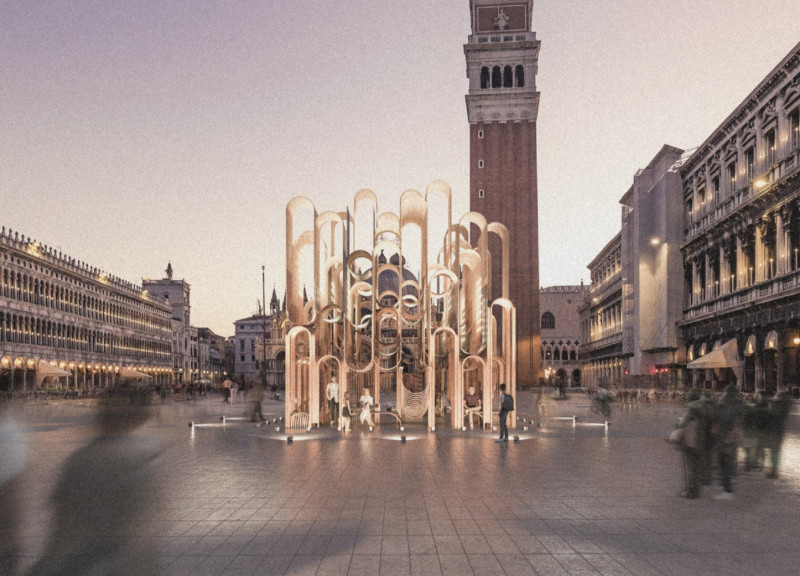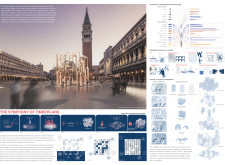5 key facts about this project
The design draws inspiration from the arched architecture of Venice, sitting within a lively urban area that fosters community interaction. It functions as a multifunctional hub, focusing on performance, relaxation, and social engagement. The concept emphasizes experiential interactions, allowing visitors to engage meaningfully with the environment, free from technology.
Conceptual Framework
At the heart of the design is the theme of interconnectedness. Bent wooden strands represent the complexities of social relationships. They capture the ways individuals intertwine and connect with one another. The design merges historical references with modern spatial strategies, encouraging a deeper understanding of its context and the social dynamics present within it.
User Experience
Human behaviors take center stage in the design. Various seating options and resting areas support standing, sitting, and reclining. The space is intended for activities like reading, meditating, and group discussions. This thoughtful layout invites people to immerse themselves in the surroundings. It creates a relaxed yet engaging atmosphere that promotes leisure and interaction.
Spatial Composition
The form of the structure is sculptural, featuring a modular arch matrix that promotes movement and fluidity. This dynamic approach creates a cohesive environment that resonates with musical rhythms, guiding users toward a central resting area. Repeating arch forms provide structural support while enhancing visual interest. This arrangement reinforces a shared community space.
Materiality and Detail
The project uses bent wooden strands and reflective metal surfaces, which add to the architectural story without dominating the overall design. These materials create a textural contrast that underscores both strength and connection. The careful integration of these elements results in a visually dynamic environment. Light plays across the surfaces, adding depth and enriching the experience within the space.



















































